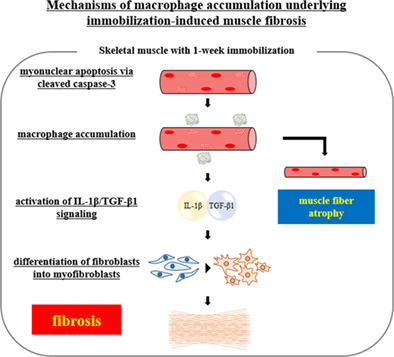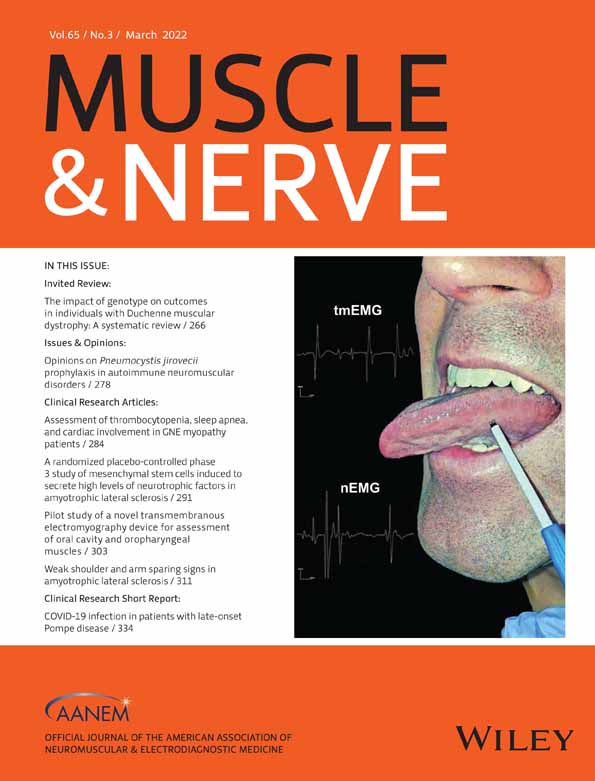Myonuclear apoptosis via cleaved caspase-3 upregulation is related to macrophage accumulation underlying immobilization-induced muscle fibrosis
Part of this work was presented at the International Society of Physical and Rehabilitation Medicine, July 2018, Paris, France.
Funding information: JSPS KAKENHI, Grant/Award Number: 16K16427
Abstract
Introduction/Aims
Although macrophage accumulation plays a key role in the development of immobilization-induced muscle fibrosis, the underlying mechanisms remain unclear. Therefore, we focused on the alterations of myonuclear apoptosis via cleaved caspase-3, and investigated whether these changes may be related to macrophage accumulation.
Methods
Eight-week-old Wistar rats were divided into immobilization and control groups, and the soleus muscles were selected for analysis.
Results
The mRNA and protein expression of collagen and the number of CD11b-positive cells were significantly higher in the immobilized rats than in the control rats at 1 and 2 weeks. TdT-mediated dUTP nick end-labeling (TUNEL)-positive myonuclei counts in 1- and 2-week control rats were 0.2 ± 0.1 and 0.2 ± 0.5, whereas they were 1.0 ± 0.6 and 1.1 ± 0.5 in 1- and 2-week immobilized rats. The cleaved caspase-3 protein expressions in 1- and 2-week control rats were 0.2 ± 0.1 and 0.2 ± 0.1, whereas they were 0.5 ± 0.1 and 0.4 ± 0.2 in 1- and 2-week immobilized rats. TUNEL-positive myonuclei counts and cleaved caspase-3 protein expression were significantly higher in immobilized rats than in control rats at 1 and 2 weeks. The numbers of myonuclei in 1- and 2-week control rats were 2.8 ± 0.1 and 2.6 ± 0.4, whereas they were 2.2 ± 0.4 and 2.2 ± 0.2 in 1- and 2-week immobilized rats. The numbers of myonuclei were significantly lower in immobilized than in control rats at both time-points.
Discussion
Myonuclear apoptosis via the upregulation of cleaved caspase-3 might induce macrophage accumulation. These alterations are related to immobilization-induced muscle fibrosis.
Graphical Abstract
Although macrophage accumulation plays a key role in the development of immobilization-induced muscle fibrosis, the underlying mechanisms remain unclear. Therefore, we focused on the alterations of myonuclear apoptosis via cleaved caspase-3, and investigated whether these changes may be related to macrophage accumulation. In the results, myonuclear apoptosis via the upregulation of cleaved caspase-3 might induce macrophage accumulation. Moreover, these alterations are related to immobilization-induced muscle fibrosis with the differentiation of fibroblasts into myofibroblasts via IL-1β/TGF-β1 signaling.
CONFLICT OF INTEREST
None of the authors have any conflict of interest to disclose.
Open Research
DATA AVAILABILITY STATEMENT
The data that support the findings of this study are available from the corresponding author upon reasonable request.





